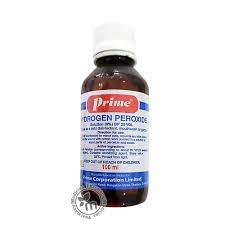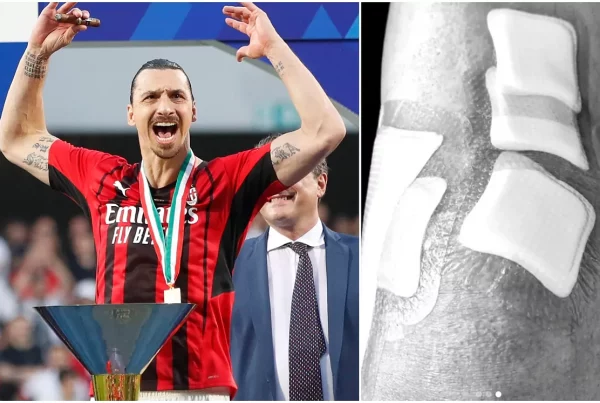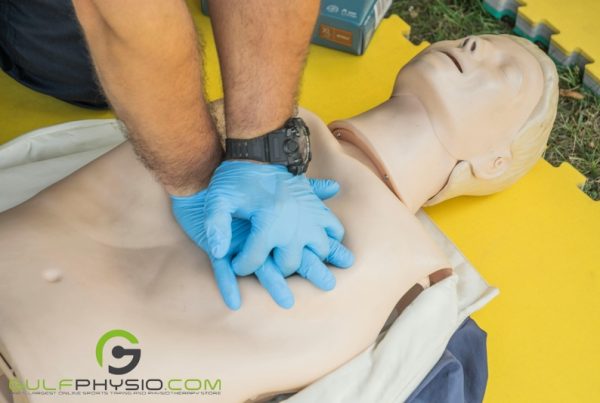A short but comprehensive guide on putting together your very own First Aid Kit
Emergencies can happen anytime and anywhere, therefore we must prepare in the event one occurs. One way to do this is by getting training and certification as a first aid responder (you can read our article about that topic here!), yet how useful are these skills, if you don’t have the right equipment to use?
In this article, we here at GulfPhysio.com will guide you through the basics and regulations of good-quality First Aid Kits.
What is a First Aid Kit?
We think First Aid Kits typically consist of a red bag with bandages, cotton, and disinfectants. Yet did you know that a lot more goes into a First Aid Kit?
Administrative Resolution No. (7) of 2022 approves the manual for providing first aid services in Dubai workplaces. The kit supplies basic medical treatment for sudden accidents.
Why do you need a First Aid Kit?
Although the question seems arbitrary, we need to recognize that having a First Aid Kit is much more crucial than just slapping a band-aid on a wound. Having a proper First Aid Kit at home, at school, in the workplace, or even in your car can potentially mean life or death in an emergency.
First aid kits are crucial for various reasons, including emergency response, saving time, protecting children, ensuring liability, protecting employees, saving money, reducing panic, preparing for time-sensitive situations, providing immediate help, reducing injury risk, and ensuring peace of mind.
A first aid kit also provides temporary aid until immediate help is available, ensuring that you have the necessary supplies to stop bleeding and prevent further injury. Hence it is also crucial to keep a first aid kit in your home, as it can save you time and money in case of an emergency.
What goes into a First Aid Kit?
The requirements for a First Aid Kit may vary depending on where you live. In Dubai, the Dubai Healthcare City Authority requires that every employer in the public or private sector must ensure the protection and safety of their employees, that a portion of their employees shall undergo training and certification in First Aid Response, and to have a First Aid Kit that meets standard requirements.
The DMCC requires the following for a standard first aid kit:
The equipment:
- Guidance card: Contrary to its name, the guidance card is not a card at all but a small leaflet that contains procedures to follow in the event of an emergency or injury.
- Plastic Band-aids: Band-aids are small strips of plaster and gauze with an adhesive applied to small cuts and wounds, effectively protecting them from infection or foreign debris.
- Adhesive tape: Adhesive tapes come in multiple shapes, sizes, and kinds to fit different needs. Such as keeping gauze and medical dressings in place and supporting injuries.
Gulfphysio.com can supply your adhesive tape need here! - Absorbent cotton: Absorbent cotton is sterile cotton made from degreased and bleached short, soft cotton fibers or viscose staple fiber. It is suitable for use in dressings due to its fine and knot-free fibers, which are up to 3 cm in length.
- Gauze Bandage: Gauze bandages are delicate, woven medical bandages used to cover wounds and remove bodily fluids. It is highly absorbent in maintaining dressings, keeping wounds clean, or applying directly to the injury’s surface. If you need gauze bandages, get them from here!
- Gauze pads: Gauze pads are reusable medical bandages. They are essential during clinical and surgical procedures for wound cleaning, blood absorption, and exfoliation. Made of cotton, polyester, or rayon, they cover wounds, absorb liquid, dry wounds, and apply medication to lesions. Gauze pads are available at GulfPhysio.com!
- Oval eye pads: Oval eye pads, also known as eye patches, are cotton patches that go through sterilization and protect the eyes from dust, dirt, moisture, and foreign elements.. They assist in recovery after minor injuries or surgeries by dressing the affected area in absorbent cotton, ensuring dryness and cleanliness. Eye pads are available here, along with more of your first aid essentials at GulfPhysio.com!
8. Triangular bandages: A triangular bandage, also known as a cravat bandage, is a versatile, right-angled cloth used for various applications. Popularized in first aid lessons by Boy Scouts, it is useful for applying pressure to wounds, wrapping sprains, splinting broken bones, and securing dressings. Survival kits often include triangular bandages for filtering water.
(Read more about triangular bandages and other kinds of bandages here.)
9. Ammonia Inhalant: Ammonia inhalants, also known as smelling salts, are chemical compounds functioning as stimulants to restore consciousness after fainting. Commonly used in cleaning agents and by athletes, these colorless gasses have a harp smell when laced at room temperature
Ammonia inhalants are available here!
10. Eye Wash: Eyewash solutions are safe ways to ease irritated eyes, often made of purified water, or sometimes other ingredients such as boric acid. They can help with burning, stinging, and itching, and can relieve air pollution and allergens. They can also remove small objects or ease irritation from chlorinated water.
11. First aid cream: A treatment for minor skin infections, cuts, and burns is an over-the-counter medication we call first aid cream It prevents minor skin infections.
12. Calamine Lotion: Calamine lotion treats mild itchiness (also known as pruritus) caused by dry skin, insect bites, chickenpox, allergic reactions, sunburns and even light skin irritation.
13. Cotton-Tipped Applicator: Cotton-tipped applicators look a bit like large Q-tips, but instead of having plastic stems applicators usually have wooden stems and only one cotton tip. They spread creams, gels, or other medical liquids to affected areas.
14. Rescue Breather: A rescue breather (sometimes called a CPR mask) is a piece of equipment that allows first aid responders to conduct CPR on an individual without having direct mouth-to-mouth contact. It provides a barrier between the rescuer and the patient, this lowers the risk of cross-contamination via saliva.
You can get your very own rescue breather here!
15. Surgical Scissors: As the name suggests surgical scissors are tools for performing surgery. There are different kinds of surgical scissors, each with varying designs and specified uses for different parts of the surgery. We have listed a few of them below:
- Bandage scissors – Bandage scissors focus on patient safety, with an angled tip and blunt bottom tip for cutting through thin materials without skin damage. There are two main types: Lister and Knowles. Lister scissors size dressings, remove bandages and cut through thicker materials like plaster, fabric, and umbilical cord. Knowles scissors are lightweight, durable, and designed with a blunt tip to prevent injury to the patient.
- Operating scissors – Operating scissors are versatile medical tools suitable for both regular and surgical use. Made of stainless steel, they require regular cleaning and sharpening. They are commonly for general surgical procedures, such as cutting tissue, sutures, or bandages. Available in various sizes, they range from small, delicate blades to larger blades for more substantial cuts.
- Iris scissors – Iris scissors are small, sharp, and fine-tipped instruments used in ophthalmic surgery, OB/GYN procedures, and dermatologic procedures. They are ideal for fine tissue removal, suture removal, and dissection in small, confined areas. Available in straight and curved blade designs, they are suitable for various procedures.
- Mayo Scissors – Mayo scissors are larger, heavier scissors used for cutting tough tissues like muscles, tendons, or cartilage. Oftentimes used to cut into fascia, a tri-layered connective tissue fiber between the skin and muscles. In cases requiring dissection, Mayo scissors need insertion into tissue tips to open them up and spread out the tissue. Made with stainless steel or titanium and come in various sizes. Mayo scissors have two types of blades: straight-bladed for cutting tissue closer to the surface, and curved-bladed scissors, which allow deeper penetration into tissues like the uterus, muscles, breast, and foot.
- Metzenbaum Scissors – Metzenbaum scissors, named after American surgeon Myron Firth Metzenbaum, are utilized in oral and reconstructive surgery. They have matching ends and longer handles, with a narrower midsection. Known for cutting soft tissue and blunt dissection, these scissors range from 4.5 inches to 14 inches in length, with smaller sizes suitable for delicate procedures.
Does your First Aid Kit need surgical scissors? Get them here!
16. Anti-septic Solution: Antiseptics are substances that slow down microorganism growth, reducing infection risk during surgery and procedures. Antiseptics reduce microbial count and surgical site infections. Antiseptics are also commonly used in hospitals and medical settings in the form of hand rubs, hand washes, and skin preparations. Some are available over the counter for home use.
Not sure what anti-septics are? Well not to worry, we’ve created this short list just for you:
- Chlorhexidine: Chlorhexidine is an antiseptic used by dentists in the treatment of gum disease (Periodontitis), and gingivitis by reducing inflammation and swelling of the mouth. In some cases, this antiseptic is also used in surgery for sterilization.
- Povidone-Iodine: Povidone-iodine is a topical antiseptic agent used to reduce infection risk, treat wounds, and prevent infections. In addition, it is also used as a surgical hand scrub and eye wash before surgery.
- Chloroxylenol: Chloroxylenol is an antimicrobial agent used for treating cuts, bites, stings, abrasions, and hand cleaning, found in antibacterial soaps, wound-cleaning applications, and household antiseptics.
- Hydrogen Peroxide: Hydrogen peroxide is a common ingredient in bleaches, dyes, cleansers, antiseptics, and disinfectants. It comes in various concentrations, including 3% for household products, 6-10% for hair dyes and teeth whitening, 35% for food-grade hydrogen peroxide, and 90% for industrial products not intended for home use.

- Isopropyl Alcohol: Isopropyl alcohol is a pure, colorless liquid with a sharp odor. Containing no other ingredients with 100% concentration Cosmetics, personal care products, perfumes, antifreeze, pharmaceuticals, dyes, lacquers, and window cleaners often use this ingredient. Production of rubbing alcohol utilizes isopropyl alcohol by being mixed with water, scents, and perfumes for personal use.
There we have it! A comprehensive list of what you need to have in a First Aid Kit in Dubai. We’ve broken down some of the components you may need in an emergency and what their uses are. If you’re interested in learning more, click here to read our article about getting your First Aid Certification in the UAE!
You can also visit us at GulfPhysio.com for all your Physiotherapy needs!
Disclaimer: GulfPhysio.com and all of its content are for informational purposes only. All information is believed to be accurate at the time of posting and should NOT be construed as professional medical advice. Please seek a medical professional in the event of pain or injury.


